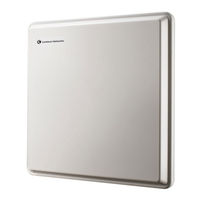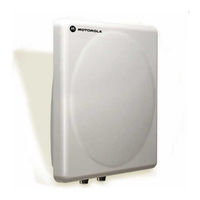Motorola PTP 58600 Network Router Manuals
Manuals and User Guides for Motorola PTP 58600 Network Router. We have 3 Motorola PTP 58600 Network Router manuals available for free PDF download: User Manual
Motorola PTP 58600 User Manual (563 pages)
PTP 600 series
Brand: Motorola
|
Category: Network Router
|
Size: 7.7 MB
Table of Contents
-
-
-
-
Purpose33
-
-
-
Overview44
-
-
-
-
Mimo71
-
Security73
-
Region Codes73
-
PTP Networks74
-
Fips 140-298
-
FIPS 140-2 Mode100
-
-
-
Site Planning108
-
Link Planning112
-
-
Standards116
-
-
-
-
-
-
Definitions148
-
Grant of License148
-
Confidentiality150
-
Transfer151
-
Updates151
-
Maintenance151
-
Disclaimer152
-
U.S. Government153
-
Term of License153
-
Governing Law153
-
Assignment153
-
Entire Agreement154
-
-
-
-
-
-
-
-
Environmental196
-
Electrical197
-
Timing Inputs197
-
-
-
Email Alerts251
-
-
Notifications277
-
-
-
-
-
Advertisement
Motorola PTP 58600 User Manual (237 pages)
PTP 600 SERIES
Brand: Motorola
|
Category: Network Router
|
Size: 3.9 MB
Table of Contents
-
-
-
-
-
Purpose33
-
-
-
-
-
-
-
Snmp82
-
Email Alerts89
-
AES License90
-
Fips 140-294
-
-
Site Planning102
-
Link Planning105
-
-
-
LPU Kit118
-
-
-
-
Definitions136
-
Grant of License136
-
Confidentiality138
-
Transfer139
-
Updates139
-
Maintenance139
-
Disclaimer140
-
U.S. Government141
-
Term of License141
-
Governing Law141
-
Assignment141
-
Entire Agreement142
-
-
-
-
-
Maximum EIRP161
-
-
-
-
-
-
Motorola PTP 58600 User Manual (61 pages)
PTP Solutions Guide Motorola Fixed Point-to-Point Wireless Bridges
Brand: Motorola
|
Category: Network Hardware
|
Size: 1.87 MB
Table of Contents
Advertisement


